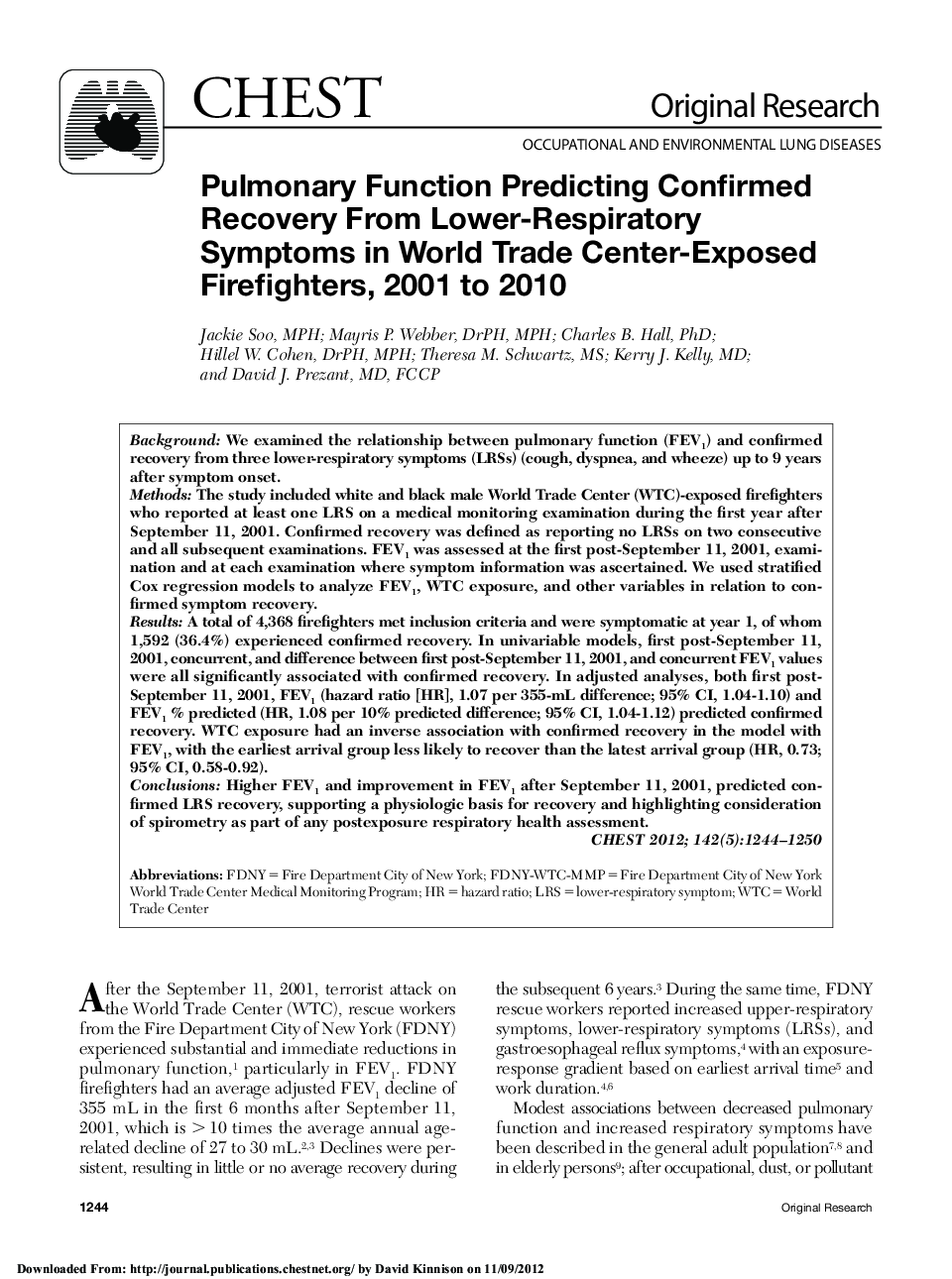| کد مقاله | کد نشریه | سال انتشار | مقاله انگلیسی | نسخه تمام متن |
|---|---|---|---|---|
| 2900996 | 1173342 | 2012 | 7 صفحه PDF | دانلود رایگان |

BackgroundWe examined the relationship between pulmonary function (FEV1) and confirmed recovery from three lower-respiratory symptoms (LRSs) (cough, dyspnea, and wheeze) up to 9 years after symptom onset.MethodsThe study included white and black male World Trade Center (WTC)-exposed firefighters who reported at least one LRS on a medical monitoring examination during the first year after September 11, 2001. Confirmed recovery was defined as reporting no LRSs on two consecutive and all subsequent examinations. FEV1 was assessed at the first post-September 11, 2001, examination and at each examination where symptom information was ascertained. We used stratified Cox regression models to analyze FEV1, WTC exposure, and other variables in relation to confirmed symptom recovery.ResultsA total of 4,368 firefighters met inclusion criteria and were symptomatic at year 1, of whom 1,592 (36.4%) experienced confirmed recovery. In univariable models, first post-September 11, 2001, concurrent, and difference between first post-September 11, 2001, and concurrent FEV1 values were all significantly associated with confirmed recovery. In adjusted analyses, both first post-September 11, 2001, FEV1 (hazard ratio [HR], 1.07 per 355-mL difference; 95% CI, 1.04-1.10) and FEV1 % predicted (HR, 1.08 per 10% predicted difference; 95% CI, 1.04-1.12) predicted confirmed recovery. WTC exposure had an inverse association with confirmed recovery in the model with FEV1, with the earliest arrival group less likely to recover than the latest arrival group (HR, 0.73; 95% CI, 0.58-0.92).ConclusionsHigher FEV1 and improvement in FEV1 after September 11, 2001, predicted confirmed LRS recovery, supporting a physiologic basis for recovery and highlighting consideration of spirometry as part of any postexposure respiratory health assessment.
Journal: Chest - Volume 142, Issue 5, November 2012, Pages 1244–1250